What we call the beginning is often the end
And to make an end is to make a beginning.
The end is where we start from.
…
We are born with the dead:
See, they return, and bring us with them.
The moment of the rose and the moment of the yew-tree
Are of equal duration. A people without history
Is not redeemed from time, for history is a pattern
Of timeless moments.
TS Eliot, Four Quartets, Little Gidding V
In a small and unassuming corner of north London, you can find the ancient village of Hornsey. The history of Hornsey can be traced back to the 1200s, originally as a village surrounded by woods, and then by farmland, until urban London expanded to surround it in the second half of the 1800s. Like so many of London’s outlying villages, it passed into history, incorporated within the modern city.
There is not very much left of the village now, but next to the train line, where the trains hurry past from central London up to the north of England and Scotland, you can find the tower and graveyard of the old parish church. The church itself has moved to a modern building nearby and only the old tower remains, surrounded by graves and a memorial garden. In spring, the garden is full of flowers and blossom on the trees, including the English bluebell, one of the iconic flowers of spring. I love the idea of shooting these signs of beautiful new growth in an historic graveyard.
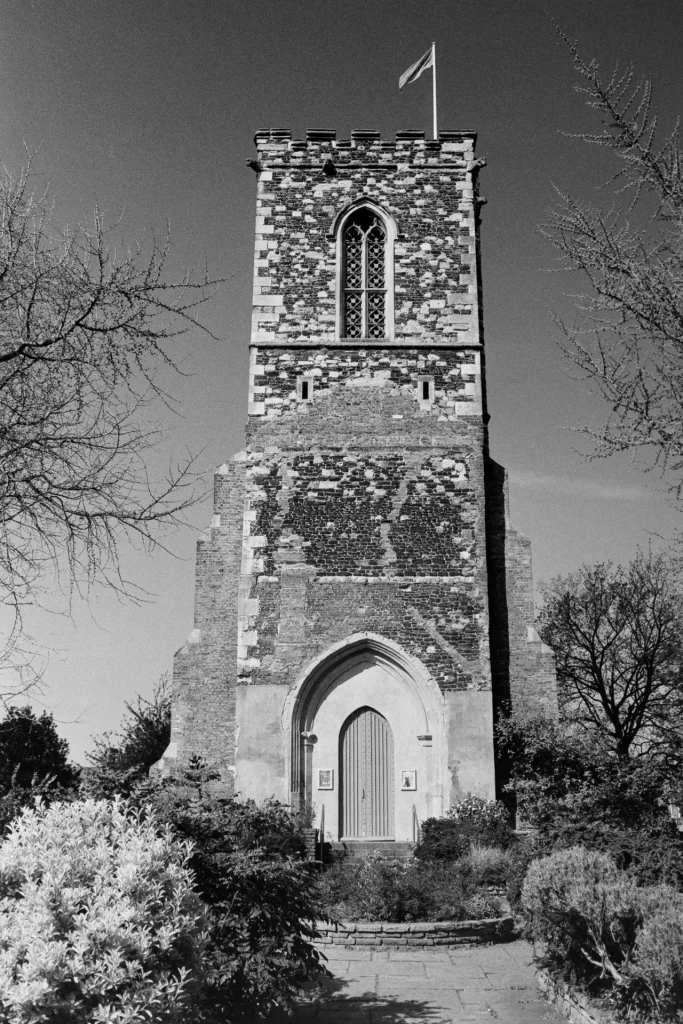
In late spring this year I had to make a trip to Hornsey and knew that I would have about half an hour to spare in the churchyard. With this clear vision of what I was going for (at least by my standards), I decided to bring a trio of film cameras along with me. The choice to bring three cameras felt quite unusual, but I knew that I had a holiday coming up when I wanted to be able to use all three confidently. And to be honest, I didn’t want to leave any of the cameras behind.
One of them was a new Holga WPC120, a plastic 6×12 medium format pinhole camera. It’s essentially a toy camera with an incredibly wide angle of view – its “focal length” is about 40mm, which gives you images roughly twice as wide as a 24mm lens does on 35mm film, in a panoramic 2×1 aspect ratio. Given that there’s no viewfinder and nothing more than a few angle-of-view lines on the top of the camera to help compose, it certainly takes getting used to.
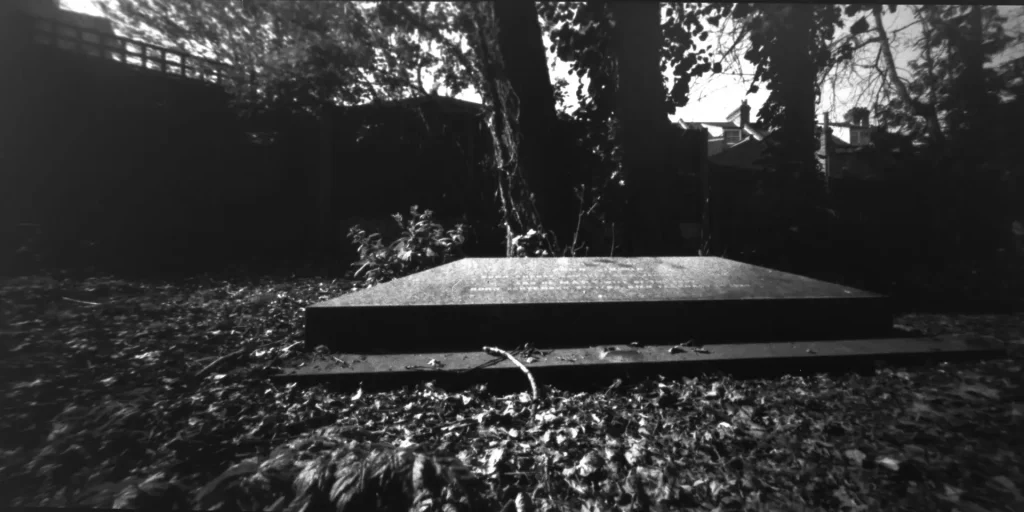
I also had with me my Zeiss Ercona (the original model rather than the Mark II version). The Ercona is a 6×9 medium format folding camera, the East German equivalent of Zeiss’s Ikonta series. A few varieties were produced, but they all have fixed standard lenses. Mine has a 105mm f/3.5 Tessar lens, and the option to shoot 6×6 as well as 6×9 images. It is a beautiful camera to use, and if you can work with the difficulties of zone focusing a 105mm lens and using the most basic viewfinder imaginable, then you can get enormous 6×9 negatives from a camera that really does fit in the pocket of your coat.
Neither of these cameras is easy to use, but thankfully I was also carrying a more familiar SLR – a Chinon CE-4 that has been in the family since the early 1980s, with its Pentax 35mm f2.8 lens. I have a couple of other lenses for it, but I almost always shoot with the 35mm lens and a deep yellow filter.
In the end, I went back a few weeks later to finish my ‘mini project’ – I still had some shots leftover on the roll of film in the Holga pinhole, and there were some more angles which I hadn’t had time to shoot on my first visit. Sroyon has recently written a post on 35mmc about ‘boring projects’ (his topic was the ‘Façades of Kolkata’) which sums up a lot of what I was thinking in creating these images – in a year when exotic and exciting travel is difficult, if not impossible, there is huge creative potential in looking closely at our local areas for subjects to document. I’ve since started another similar project in local woodland, trying to document its life-cycle over a year or more, which I hope to be able share in a future post.
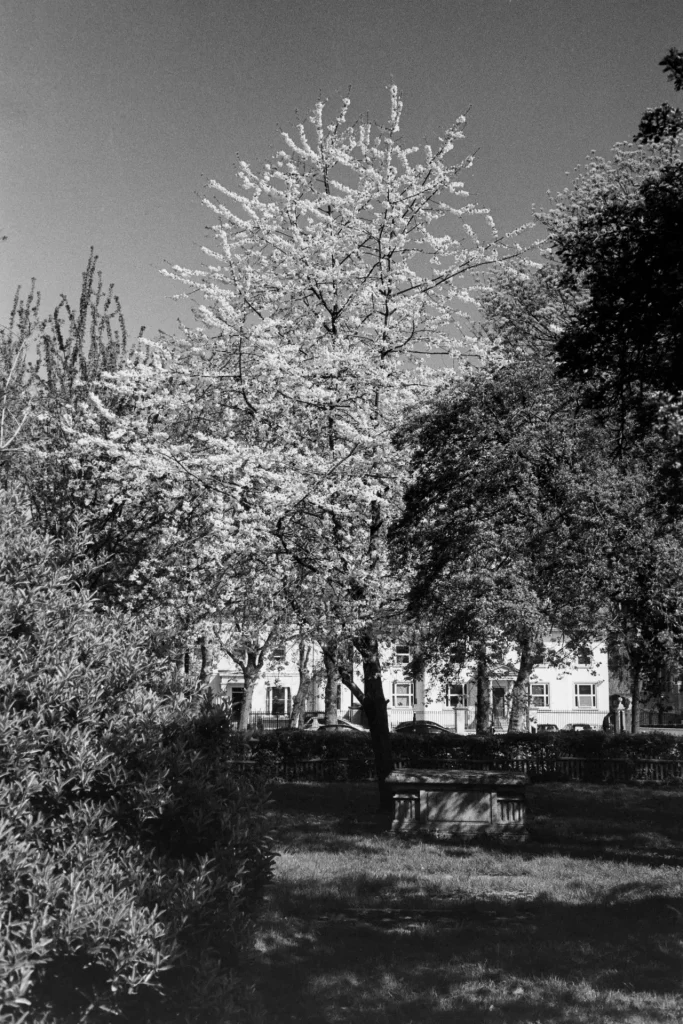
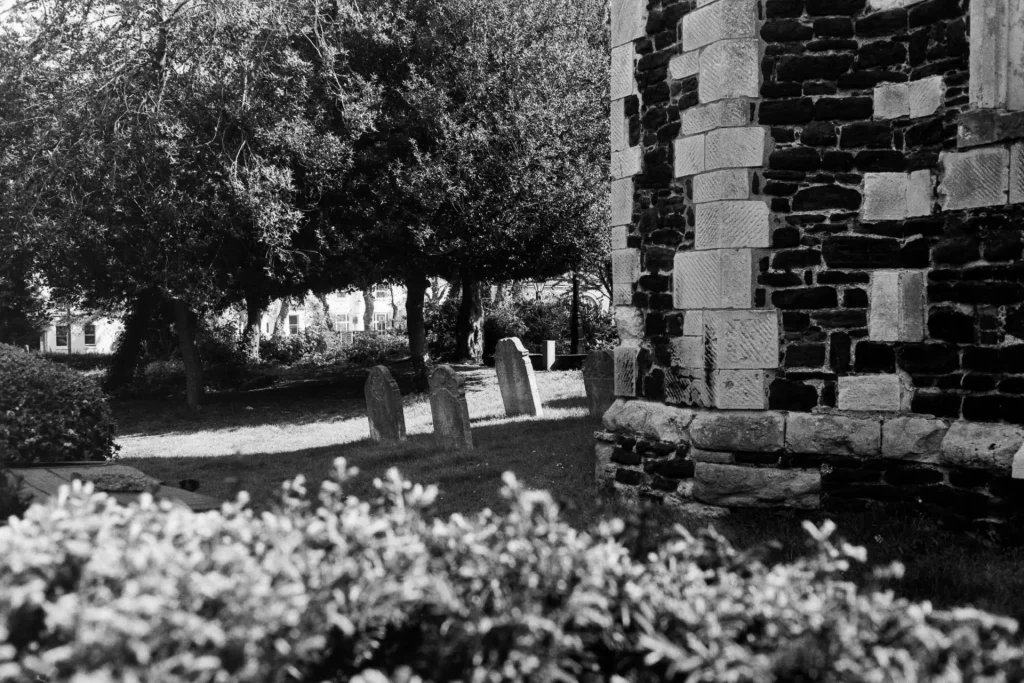
I’m pretty happy with the overall series of images from just a couple of short trips to the churchyard. Your can really tell the difference between the two medium format cameras. The images from the Holga pinhole and the Ercona are hugely different: the Ercona has a pretty sharp lens and a crazily narrow depth of field, and the Holga is pretty much the exact opposite of that! On the other hand, the Holga does have the potential for some quite powerful and atmospheric images. I feel like I’m only scratching the surface of its potential at the moment: I need more practice with composition, simply because of the enormous field of view and strong vignetting. Even so, I like the character of the pinhole shots from the churchyard, and I can see real creative potential, even it’s going to take some work to get there.
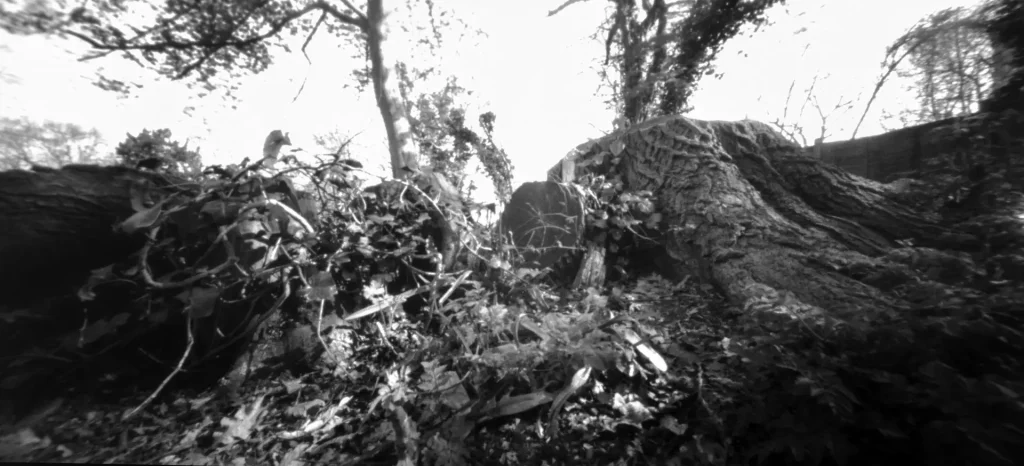
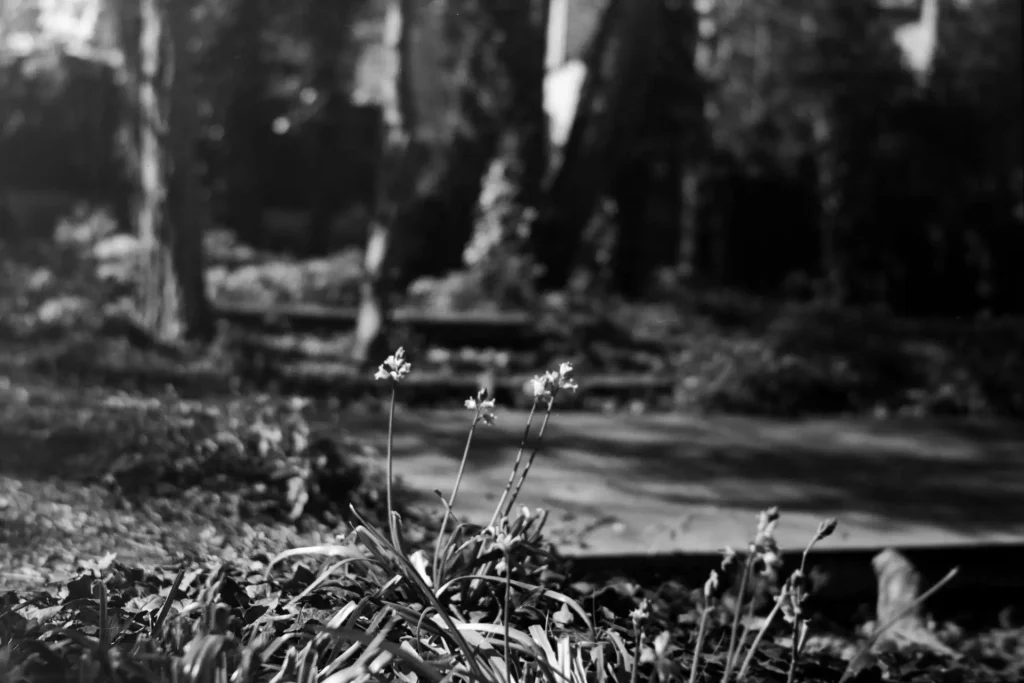
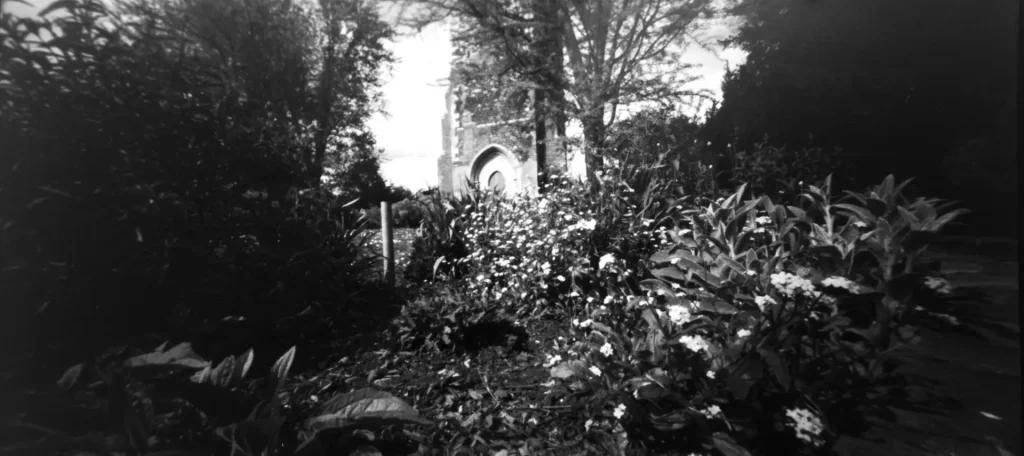
This pair of shots below of the church tower itself shows the difference between the 35mm lens on 35mm film and the 105mm lens on 120 film, despite the identical aspect ratio. They were taken at the same time and from the same spot – you can even see the same gardener having a rest in both images. The 35mm shot has much more obvious grain but both the tower and the foreground are reasonably well in focus. The 6×9 shot at 105mm, working out at something like a 45mm equivalent, loses the focus not only on the foreground, but also on the bottom of the tower itself! On the other hand, the grain is pretty much invisible. The difference in grain is, to some extent, a reflection of the fact that I had the end of a roll of Delta 100 in the Ercona and my usual favourite of FP4 Plus in the 35mm SLR, but I tend to see quite a difference with FP4 Plus in 120 as well.
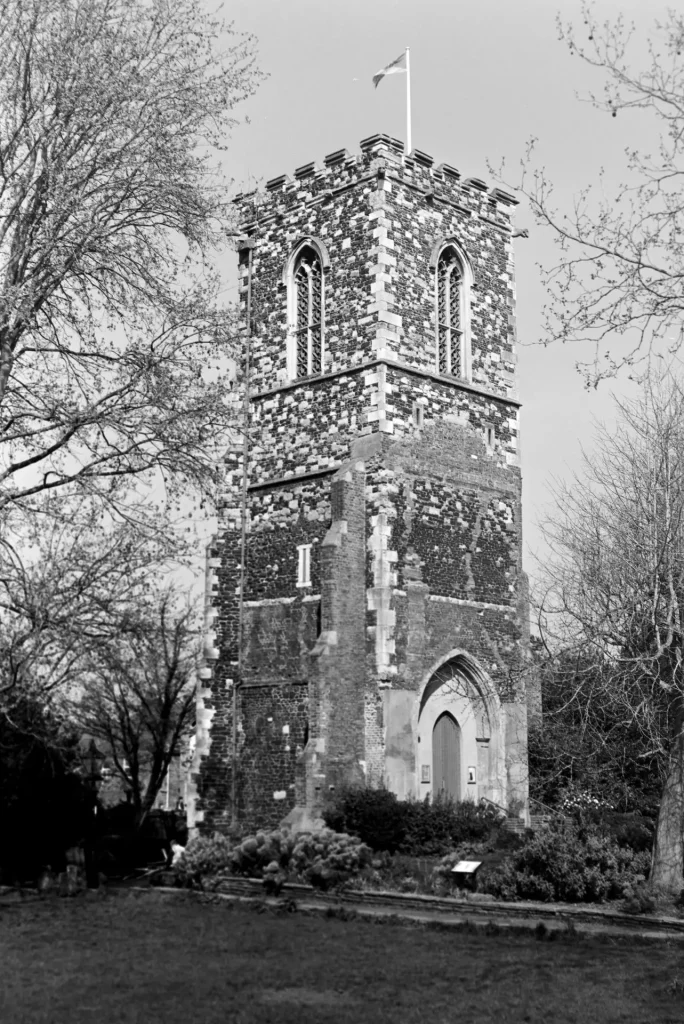
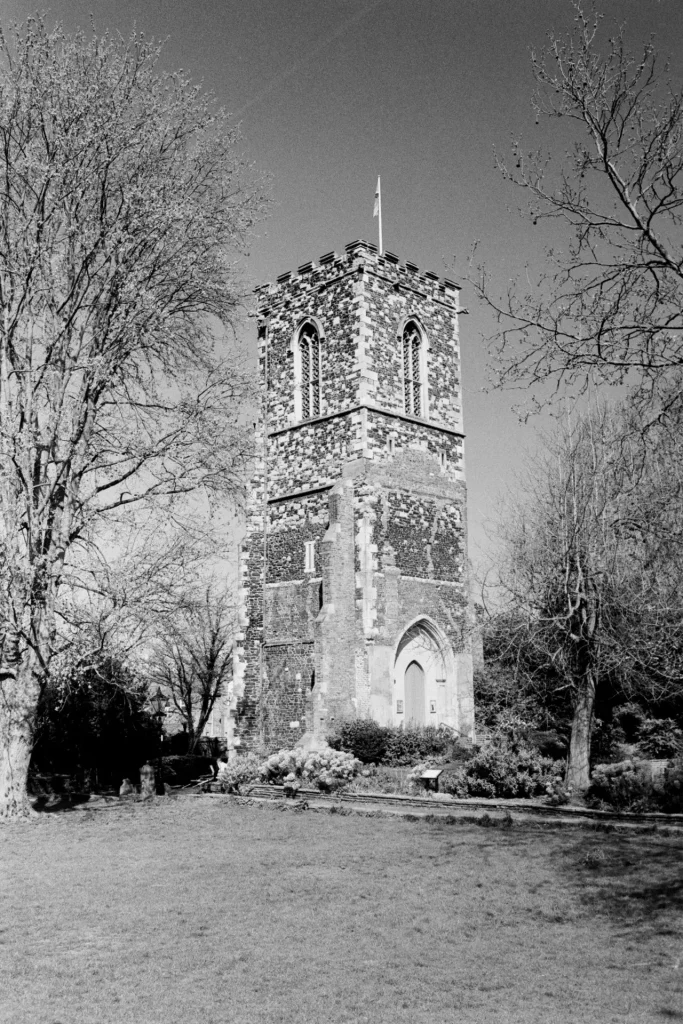
I love the sense of contrast in these images – not just the contrast between light and shadow, but many other contrasts as well. The location is a small piece of history in a modern city, and a quiet space amidst the busy working week. The solid forms of gravestones and the church tower contrast strongly with the soft backdrop of trees, blossom and the flowering plants. There is a lovely patch of wild ground where new spring flowers grow amidst broken gravestones under the trees. More philosophically, those contrasts are picked up, to my mind, in the contrast between new growth and the hope of spring with all its associations of new life, and the solid, unchanging stone of the graves marking lives which have now come to an end. But the churchyard made me feel that there is hope in that human cycle too – among all the memorials of lives long past, the children of today were playing in the sun, adults were walking their dogs and drinking coffee with their friends. The city can grow and continue through the generations.
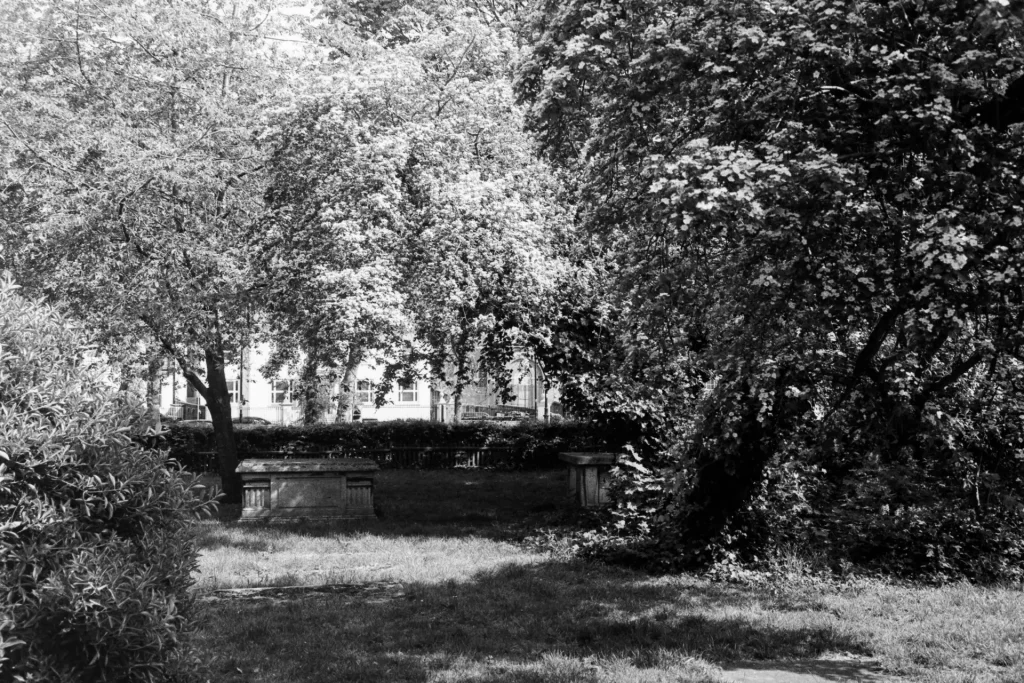
I hope you’ve enjoyed these images and my reflections on the very modest project. If you’d like to see more of my images, including some more of the images from this series, you can follow me on Instagram at @pjahlquist
Thanks for reading!
Share this post:
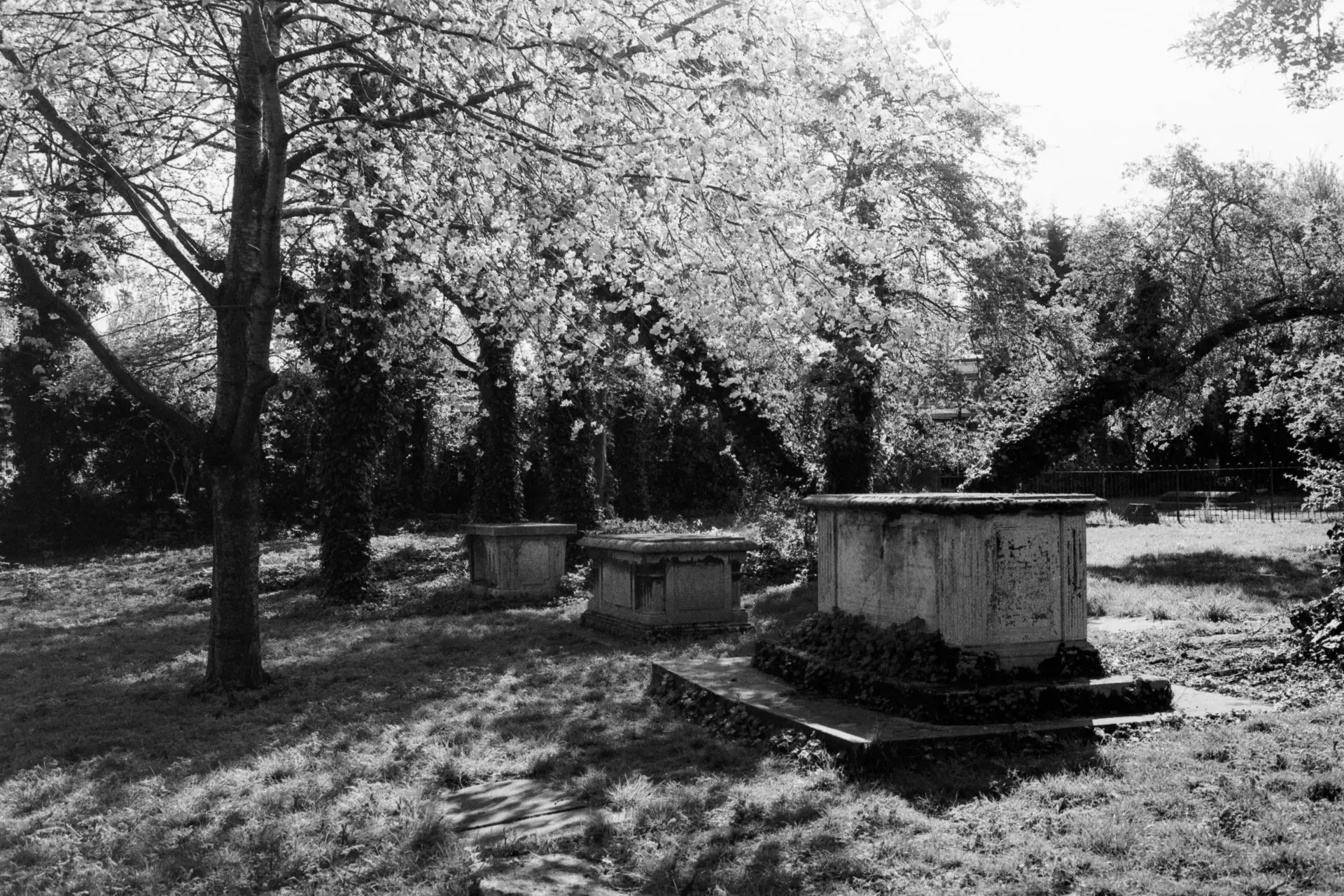








Comments
Alan Withington on Spring Blossom in the Churchyard – a Mini-Project in Black & White – By Philip Ahlquist
Comment posted: 30/09/2021
Comment posted: 30/09/2021
Peter Roberts on Spring Blossom in the Churchyard – a Mini-Project in Black & White – By Philip Ahlquist
Comment posted: 30/09/2021
I look forward to your woodlands project should you decide to post that.
Michael on Spring Blossom in the Churchyard – a Mini-Project in Black & White – By Philip Ahlquist
Comment posted: 30/09/2021
Comment posted: 30/09/2021
Michael J on Spring Blossom in the Churchyard – a Mini-Project in Black & White – By Philip Ahlquist
Comment posted: 30/09/2021
I especially like the "Bluebells and Gravestones" one with the Zeiss Ercona.
Sroyon on Spring Blossom in the Churchyard – a Mini-Project in Black & White – By Philip Ahlquist
Comment posted: 01/10/2021
Comment posted: 01/10/2021